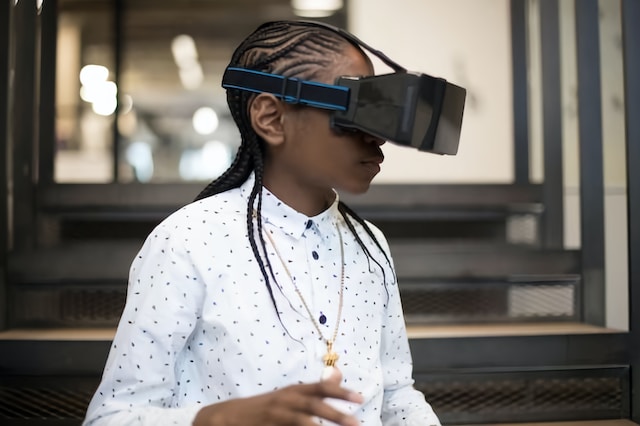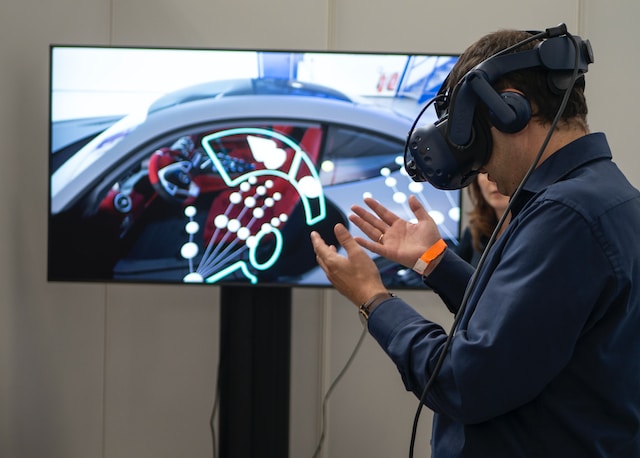Table of Contents
A few weeks ago, Meta hosted Meta Connect 2023. The event showcased some of the new ideas and innovations Meta is working on, and one particularly caught our attention—Codex avatars or photo realistic avatars which can be used for VR meetings.
The Unspoken Pandemic
One of the greatest issues plaguing us is our inability to maintain our attention. Our world is designed to hijack our time. Thousands of engineers and human behaviour psychologists in Silicon Valley are tirelessly working to keep us glued to the screen.
And although it may not seem so serious, it actually affects us in more ways than one.
The constant bombardment of stimuli conditions our behaviour, hooks us into scrolling, and isolates us from the world. We’ve gone from being used to watching hour-long documentaries to 20-second shorts in just a few years. This cripples our ability to focus for extended periods and in turn necessitates our need for more stimulation.
I believe this substantial loss in our focus is one of the main issues with virtual events. It’s impossible to hold our audience’s attention when they are also glued to their computer and mobile screens.
Like the engineers in Silicon Valley, we need the audience’s attention to generate value. Our sponsors need a return on investment, and our exhibitors need to generate sales. We also want our brand to have a memorable impact and ultimately increase our events’ intangible legacy. All of this is impossible if we can’t capture our audience’s attention, especially when competing against apps like Gmail, Whatsapp, Slack, Facebook, Instagram, YouTube, and Tinder.
This issue also pervades in-person events but it’s much easier to overcome when we can look into each other’s eyes, our laptops are stowed in our bags, and our phones are silenced.
The Metaverse
Our current understanding of the Metaverse is that it’s crude, expensive, and not scalable. But perhaps the problem is our current conception of what the Metaverse is.
After Meta Connect, Mark had an interview with Lex Fridman, a well-known American engineer and YouTuber. You don’t need to watch the entire video of what happened, but before you continue reading, take a look at the first few minutes:
I think there’s nothing like seeing Lex’s face to understand that this is a giant leap for several reasons:
- Focus
Both are in a black room. The total lack of distractions forces them to focus on the conversation. They can’t pull out their phones – they can’t get distracted. They’re just two people talking in a room.
- Sense of Reality
The hyper realistic characters are almost indistinguishable from reality. The fluidity with which the Meta headset captures facial details is astonishing.
- Empathy
The photorealism of the avatars and the ability to analyse and reproduce gestures in real-time make it possible for the brain to forget it’s in a virtual environment. They’re looking at each other. No context of gestures, tone, or attitude is lost. It’s (almost) real.
Present and Future
According to Mark Zuckerberg, CEO of Meta, this is only a prototype. The avatars have had to be created and optimised beforehand, and we are “far” from seeing it in production.
There are many challenges to overcome before this becomes a reality. When it does happen, will we all be buying virtual reality headsets like we buy phones?
When the previous model of Meta’s virtual glasses, Meta Quest 2, hit the market, I bought them sceptically. My goal was to learn about the technology and be prepared for the future.
The result was that I spent weeks showing them to my friends and family, many of whom also bought the device. However, everyone stopped using them after a few months. They are currently too focused on gaming and other more developed domains, and the WOW effect eventually wore off.
The potential however is there. I don’t find it unlikely that we will soon set aside screens for virtual reality glasses. In that virtual world, we could have as many screens as we want, interact with other people much more realistically, and control distractions to be more productive.
What About Events?
The entire conversation on hyper realistic avatars in the Metaverse begs the question: how will this type of technology affect events in the future? Based on my own knowledge, these would be key points to consider:
- New Formats for Participation
Advancements in a better-conceptualised Metaverse could lead to new formats for virtual events. We would not just be talking about webinars or video conferences but fully immersive experiences. This could include “rooms” for networking, product presentations in 3D environments, and discussion panels that feel more like in-person meetings.
- Enhanced Interactivity
The use of hyper realistic avatars and immersive environments could take interactivity to a new level. Attendees could, for example, interact with products at a fair booth in a much more realistic manner or participate in small group discussions more naturally.
- Metrics and Behaviour Analysis
The Metaverse environment would allow for a new level of tracking participation and engagement. Beyond knowing who attended what session, we could have data on how attendees interact among themselves with far more nuances, thanks to having more facial expression data, for example.
- Personalisation and Adaptability
In an advanced virtual environment, there is the possibility to adapt the experience to the user much more effectively than in in-person events. From the type of content that is displayed to the people with whom one connects for networking, everything could be personalised using machine-learning algorithms.
- Technological and Ethical Challenges
The large-scale implementation of these technologies involves significant challenges. From the technical side, we are talking about processing capacity and bandwidth requirements. On the ethical aspect, there are concerns about privacy, inclusivity, and, of course, the already mentioned attention crisis.
In conclusion
Virtual events didn’t take off at their time, but perhaps they may have another chance with VR technology. I am referring to something beyond these tacky games where we move around with unrealistic avatars. It will be something so real that we will forget we are in our living rooms or using wearable tech.
While I believe that nothing can ever replace human contact, we also need to rethink what it means to “be present” at an event. I fear that perhaps we may forget the value of being present and that newer event formats will only make the attention crisis worse.
About Eventscase
The Eventscase platform helps event organisers manage corporate events, conferences, and trade shows, whether large, small, in-person, hybrid, or virtual. No technical skill is required at all. Anyone can create beautiful event websites, registrations, badges, perform check-ins, event apps, 1:1 meetings and more. Everything under the brand and domain of your company can be implemented with an Eventscase whitelabelled platform.
If you would like to subscribe to our newsletter to get live updates on everything related to our platform – news, blogs, events, announcements and much more, please, register here.



